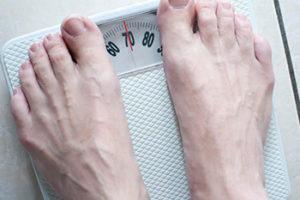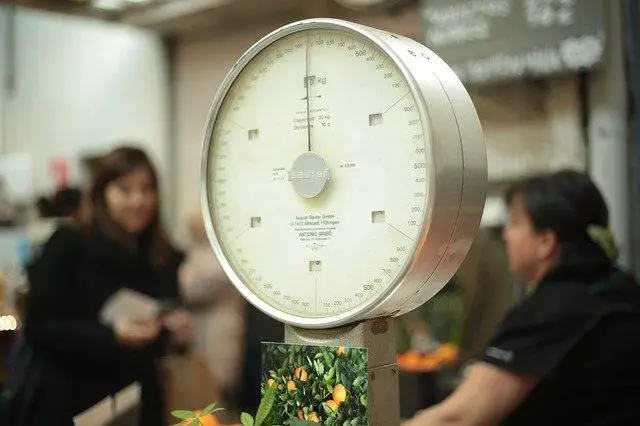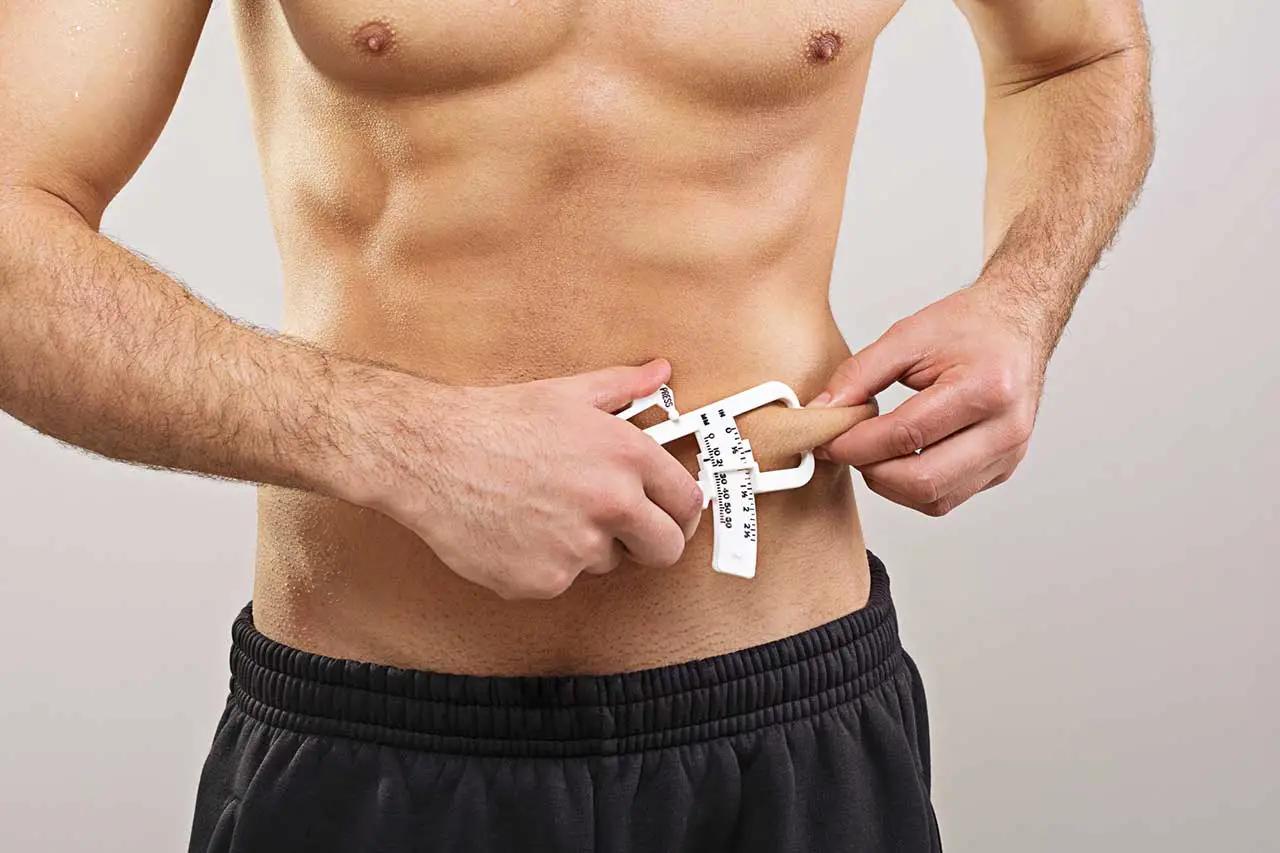Updated March 2021
Losing weight can be a difficult feat to accomplish when trying to find the motivation and the strength to get your body moving. Understanding the dynamics of muscle vs fat in your body can help you see results a lot quicker and more efficiently.
Watching your weight dropping on the scale is not entirely accurate because when you start working out you lose fat while gaining muscle. The number on a traditional scale isn’t able to represent these two percentages.
That is why you should better understand the fat vs muscle ratio in your body in order to lose the right type of weight.
Here are some things you need to know about your body’s fat and muscle content.
Muscle Vs Fat Weight?
 It is common to hear someone comment that muscle weighs more than fat, usually to make someone else feel better about their weight on the scale. This is not entirely true, since a pound of muscle is the same weight as a pound of fat.
It is common to hear someone comment that muscle weighs more than fat, usually to make someone else feel better about their weight on the scale. This is not entirely true, since a pound of muscle is the same weight as a pound of fat.
However, the notion of mistrusting the number on the scale is valid because muscle is more dense than fat, meaning that it takes up a lot less space in the body.
So if the number on the scale is high, yet you’re looking leaner than before, this is because more muscle takes up less space than fat.
Too much fat can lead to all kinds of disorders and conditions in both men and women, so keep your body fat down!
Keeping your body fat percentage low is important to protect your health, both physical and mental.
High levels of fat in your body can lead to a negative self-image, which could move on to causing anxiety and depression. Your physical health can also suffer from an increased risk of hypertension, heart disease, and type 2 diabetes, among other illnesses.
The Different Types Of Body Fat
Brown fat – This is one of the “good fat” types. Brown fat is found in the back of your neck and is your body’s way of turning your food into heat for survival in cold climates.
Beige fat – Another “good fat” type, beige fat is neutral in color and is usually mixed with other types of fat. It is found near the spine.
White fat – This is a “bad fat” to have. It is found in large quantities in your body. While brown fat burns energy, white fat stores it. This fat is found in two regions as two different types.
The first type is subcutaneous fat, which lies right under the surface of your skin.
Visceral fat is the other type of white fat. This is stored deep inside your body, wrapped around your organs. Visceral fat is one of the most dangerous types because any blood flowing through it is dumped into the liver.
Muscle Mass
 Muscle mass is the entire weight of all the muscles in your body, including the water content in these muscles.
Muscle mass is the entire weight of all the muscles in your body, including the water content in these muscles.
To calculate your muscle mass, you need to first accurately calculate your body fat percentage as this number needs to be subtracted from the weight you see on the scale. You can measure this in a few different ways:
How To Calculate Body Fat Percentage
- Visually – Compare your figure to a list of pictures of people’s bodies with different body fat content.
- Calipers – Pull your fat away and pinch it with the calipers to take a measurement. Use multiple sites around your body and get an average. Compare it to a body fat chart.
- Measurements – Measure your waist, hips, and bust. Use these measurements in a formula to calculate body fat percentage.
- Body fat scales – Using an electric current to measure resistance in your body, your body fat percentage can be computed. We reviewed the best body fat scales on this website.
- Bod Pod – This device uses displacement of air to calculate values for your fat level, volume, weight, and density.
- Water displacement – This is an extremely accurate method of testing your body fat percentage using Archimedes’ Principle.
- DEXA – X-rays of your body fat can be done at most healthcare facilities.
Here is a list of the top body fat analyzers, to measure your body fat in seconds at home:
How To Calculate Muscle Mass
- Weigh yourself using a body fat measurement scale
- Subtract this value from 100
- Divide by 100
- Multiply by total body weight (in lbs)
Start measuring your body fat and muscle mass today to step into a world of better weight and health management.
How To Gain Muscle Versus Fat Gain
When you are aiming to “lose weight” and feel better about your body while toning those areas, you will need to understand how to lose fat versus muscle. You don’t want to lose out on muscle mass when you are exercising.
Here are a few tips to help you change that fat to muscle:
Resistance Training
Resistance training is a great way to lose fat while gaining muscle. This type of training can be any exercise that requires you to resist against a force, the most obvious type being weight training.
When you are lifting weights, your muscles need to oppose the force of the heavy weights, which helps build your muscles over time.
You can also use your own body weight in resistance training. Any movement where your muscles have to oppose the force of your body can be called resistance training. Squats and push-ups are two examples of this.
Smart Dieting
The other step to lose fat but not muscle is to eat correctly. If you are aiming to build muscle or turn your existing fat into muscle, you should look to consume a diet high in protein.
Protein is essential for muscle growth. While the various types of resistance training break down your muscles, the protein you consume helps to build them back up, stronger than before.
This process of breaking down your muscles and building them up is known as hypertrophy. The best way to achieve this in strength training is to increase the sets and rep count while reducing the intensity slightly.
However, everyone’s body is unique and you should try various training programs including cardio training, HIIT, and others to find what works best for your body.
Body Fat Versus Muscle FAQs
How Do You Know If Weight Gain Is Muscle Or Fat?
The most accurate way to determine if your weight gain is caused by an increase in fat or muscle is to measure your body fat percentage and deduct it from your overall body weight using the formula we have provided above.
What Is A Healthy Body Fat Percentage?
Healthy body fat percentages differ between men and women. While the healthy range of body fat percentage is anywhere between 10-25% for men, it is anywhere from 14-33% for women. Everyone’s body is different, so these percentages will depend on your unique body.
Before You Go
When you are trying to lose weight, you should focus on the intricacies of your body rather than simply looking at the number on the scale. This will help prevent you from losing motivation and feeling frustrated when the number is not what you hoped it would be.




